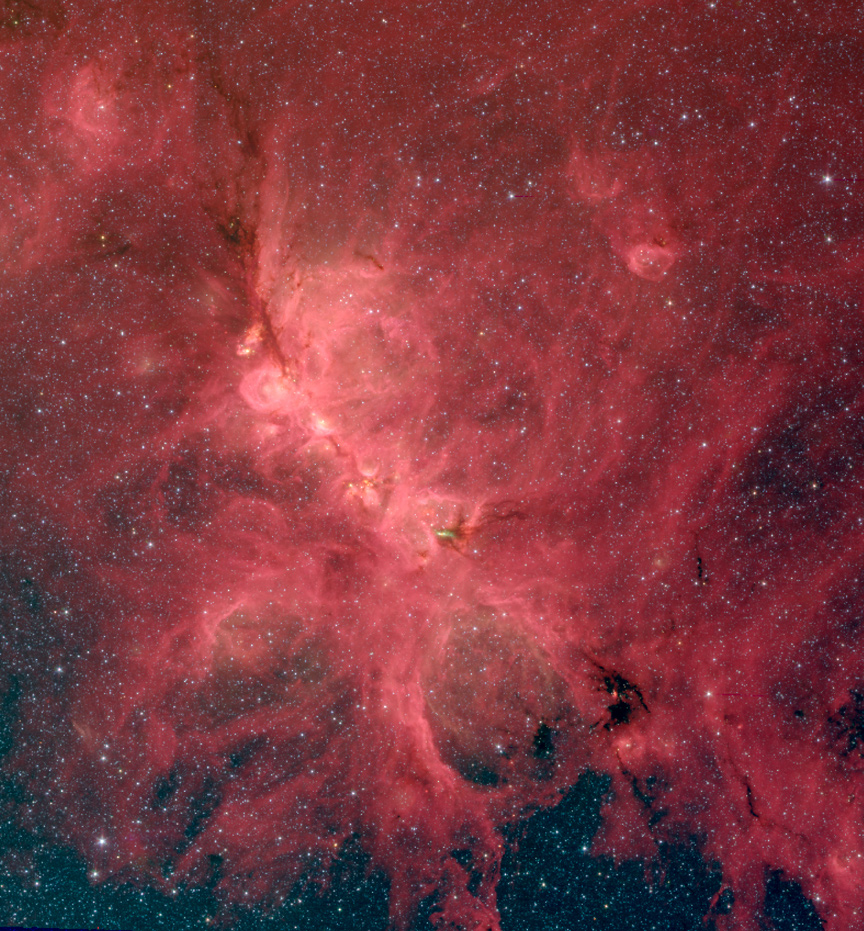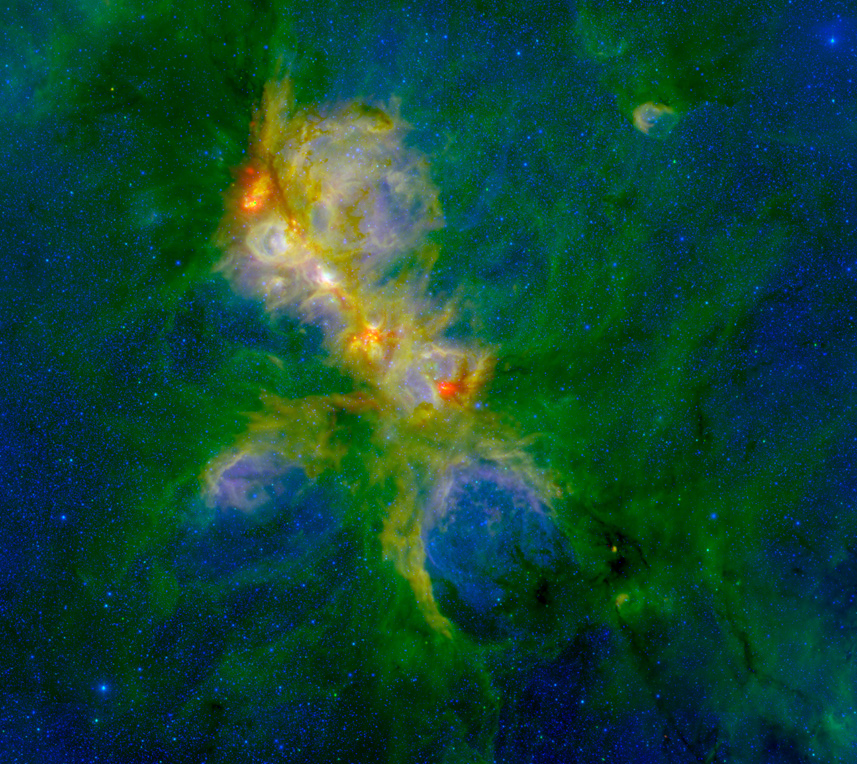Image List
-

NGC 6334, also known as the Cat’s Paw Nebula, comes alive in this infrared image from the Spitzer Space Telescope. NGC 6334 is forming stars so rapidly that it is undergoing a "mini-starburst." Young stars are heating surrounding dust, causing it to glow. In this representative-color photo red shows light at a wavelength of 8 microns, green is 4.5 microns, and blue is 3.6 microns.
S. Willis (CfA); NASA/JPL-Caltech/SSC -

This representative-color photo of NGC 6334 combines infrared data from the Herschel and Spitzer spacecraft and ground-based NEWFIRM instrument. Warm dust, illuminated by the high-mass stars that are scattered throughout the cloud complex, shows up in green. The red and orange spots mark the very massive young stars that are just forming within the nebula. The dark clouds, primarily at the upper left and lower right of the image, mark the densest areas where the next generation of stars will form. The hazy blue-white regions mark where the light emitted by the hot young stars is reflected back to us by the remaining dust and gas. In this photo red shows light at a wavelength of 70 microns, green is 8 microns, and blue is 1.2 microns.
S. Willis (CfA); ESA/Herschel ; NASA/JPL-Caltech/SSC; CTIO/NOAO/AURA/NSF